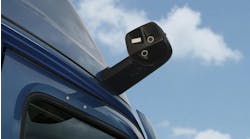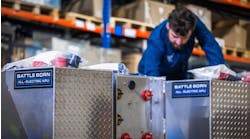ATLANTA. Trucks from fleets participating in the American Trucking Associations’ Technology & Maintenance Council and FleetNet America 13-month-old roadside repair benchmarking program reported about 10,000 miles covered before a breakdown event in 2018.
“We’re looking at roadside repairs for a couple of reasons,” explained Jim Buell, executive vice president of sales and marketing for FleetNet America, at the TMC annual meeting here. The BenchMarkit program launched at TMC’s 2018 annual meeting.
“One, it costs more to fix something on the side of the road. You have to bring someone out there, pay the retail labor rate, and they charge more because it’s dangerous and scary to do that. On average, it costs about four times as much to repair something on the side of the road than it does in your own shop.
“The second reason is that understanding your roadside failures gives you great insight into your overall maintenance operation. I get that a tire can fail on the road, but do the brakes really have to fail? I don’t think so.”
Buell reported that the average cost per roadside repair event rose from $311 in fourth-quarter 2017 to $334 in fourth-quarter 2018. This did not take into account tire repairs. Tires cost more, so tire repairs would drive it up higher.
“The truckload vertical should not be breaking down every 10,000 miles,” asserted Buell. “From this data I have confidence saying that most fleets are having more roadside repairs than they should. And having more customer experience issues than they should.”
The vehicle systems with the most unscheduled repairs reported during the program were cooling, wheels, rims, hubs and bearings, brakes, lighting systems and tires, tubes, liners and valves.
Buell also pointed out other issues affecting fleet finances.
“Fleets say they are hearing from their service providers that they’re getting parts price increases because of the tariffs that we have. Another problem is the tech shortage. They’re having a hard time getting techs, and having to pay more for techs, so labor’s going up.”
Prices for parts are likely to continue, noted Buell. “There could be trade agreements that bring prices back, but I’ll tell you — I’ve been on the manufacturing side of the road, and once you take your price up for whatever reason, it’s hard to take your price back down.”
Buell said the data compiled is strictly for the truckload industry, but they have enough fleets to start less-than-truckload and tanker segments. “For people that watch this industry, when you start comparing the different verticals, it will give us even more interesting insights into what’s going on in the business.”



